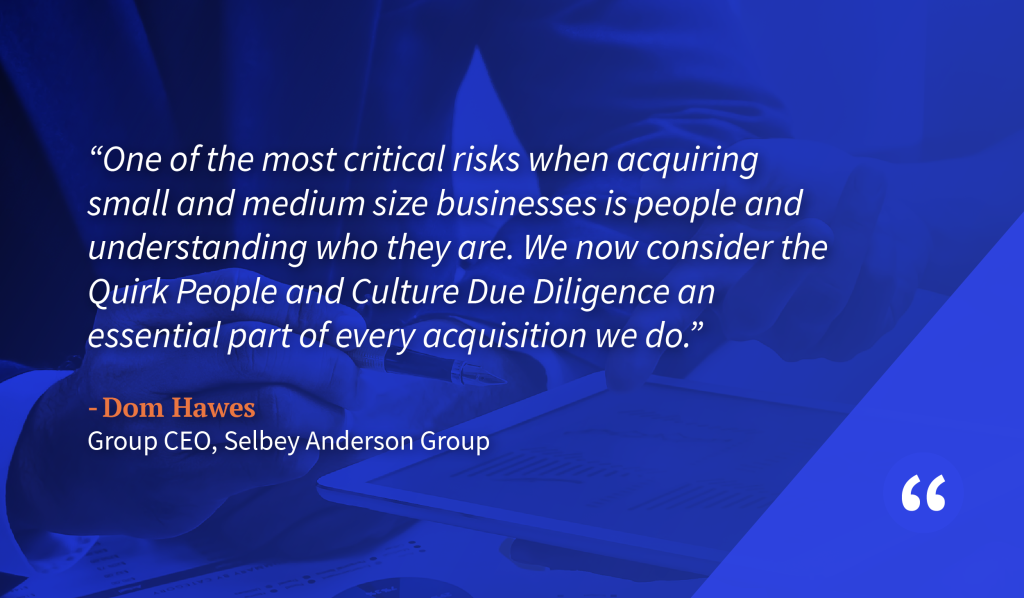Organisations often pursue mergers and acquisitions to increase market reach and business expansion, but in so doing, they don’t often consider the emotional toll these changes can have on employees. M&As are often kept confidential and only shared with senior leaders. So, when there is finally an official announcement, it can be a shock for employees.
There will be a rollercoaster of emotions for employees during these transitions, from uncertainty and apprehension to excitement and anticipation. Emotional reactions follow the Kübler-Ross Change Curve, with peaks of shock and fear that eventually lead to acceptance and progress. So, it is a natural response for employees to become concerned with what the change means for their jobs. Sincere communication helps to ease fears and minimise disruption. This article delves into factors affecting employees’ emotions during M&A and provides strategies for leaders to support their workforce.
Factors leading to employees’ emotional challenges
In 1998, Daimler-Benz, a German automotive company known for its methodical decision-making and conservative work culture, merged with Chrysler, an American automaker characterised by creative and unstructured decision-making. These companies had a different approach to hierarchy and employee compensation. Imagine the emotional turmoil for employees navigating these stark differences. The merger was ultimately unsuccessful due to a cultural clash, and here’s some insight into the link with employee emotion.
Uncertainty about job security
The merger brought together two distinct corporate cultures. The result was uncertainty, confusion, and discomfort among employees from both companies who had to adapt to new norms and practices. Uncertainty about job security would have been a common concern too. Employees often fear layoffs or changes in their roles because of M&A. In the Daimler-Chrysler case, the differing approaches to hierarchy and decision-making fuelled worries about job security and potential redundancies.
Communication gaps
Employees often resort to rumours and speculation to fill the information gap when lacking communication. In the case of Daimler-Benz and Chrysler, the lack of clear communication may have fuelled rumours about leadership changes and the overall future of the merged entity. Poor communication may lead employees to feel anxious, worsening the situation. So, socially aware leaders should be able to detect and address these emotions accordingly.
What’s the impact of emotional stress during M&A?
Without timely intervention to employees’ emotional stress, businesses will likely see reduced performance and an overall dip in organisational functioning. For instance, employee productivity and knowledge sharing are two areas that could be greatly impacted by emotional stress during M&A.
Emotional stress and employee productivity don’t mix
According to the Workplace Health Report 2023, one out of three employees say high-stress levels affect their productivity. This stress can become even more intense during mergers and acquisitions if not correctly addressed. Emotionally stressed employees may experience decreased productivity, engagement, and focus on their work, affecting their overall performance and company results. Moreover, valuable employees may leave the company if stress levels continue to rise, losing key talent essential for the company’s success. At Quirk, we specialise in cultural due diligence during M&A, which aims to reduce the loss of critical staff or acquired value.

Knowledge transfer slows down in stressful times
It is imperative to consider the impact of employee emotions on knowledge transfer and retention. Specifically, when employees feel undervalued, they may hesitate to share important information. This hesitation may stem from a fear of being replaced or assigned more responsibilities. Emotional stress can also lead to a decrease in the willingness to share one’s expertise, which can often hinder the integration of processes and prevent valuable synergies. The emotional well-being of employees plays a crucial role in the success of post-merger integration efforts. Employees who feel supported and understood are more likely to embrace changes and contribute to the company’s goals.
Managing employee emotions during M&A
So, how can leaders manage and support their employees during M&A? Frequent and clear communication and providing a safe space through focus groups are helpful approaches. Here are five considerations for navigating the human side of M&A:
- Communicate Clearly and Effectively
During M&A, it’s essential to communicate openly and clearly with employees. Regular updates and approachable leaders can help alleviate anxiety and build trust, restoring employees’ confidence in the organisation and their roles within it.
- Conduct Post-Announcement Focus Groups
Engage employees in post-announcement focus groups to ensure smooth integration. These sessions offer a safe space for concerns, suggestions, and valuable insights. By actively listening, you can address worries, clarify misunderstandings, and foster a sense of unity and shared purpose. Encouraging leaders to participate and show empathy reinforces the organisation’s commitment to employee well-being.
- Recognise and Leverage Differences
Considering each one’s strengths and systems is crucial when merging organisations. Involve employees in deciding which tools and processes to keep, combine, or change to create a smoother integration and a sense of ownership.
- Address Work Routines and Workplace Culture
To reduce emotional stress from changes in work routines and culture, explain the reasons behind the changes and provide supporting resources. Emphasise shared values and the importance of each employee’s contribution to success.
- Monitor Progress through Feedback Loops
Continuous monitoring enables leaders to ensure emotional well-being during integration. Track employee sentiment by gathering feedback through surveys, pulse checks, and one-on-one conversations. This allows for necessary changes, addressing emerging issues, and refining the approach to managing emotional transitions.
In managing employees during emotional transitions in M&A, a holistic approach that combines clear communication, active listening, recognition of differences, and emotional support will contribute to a successful integration while nurturing a positive and engaged workforce.
To learn more about how Quirk Solutions can support your merger and acquisition process, email us at [email protected].



